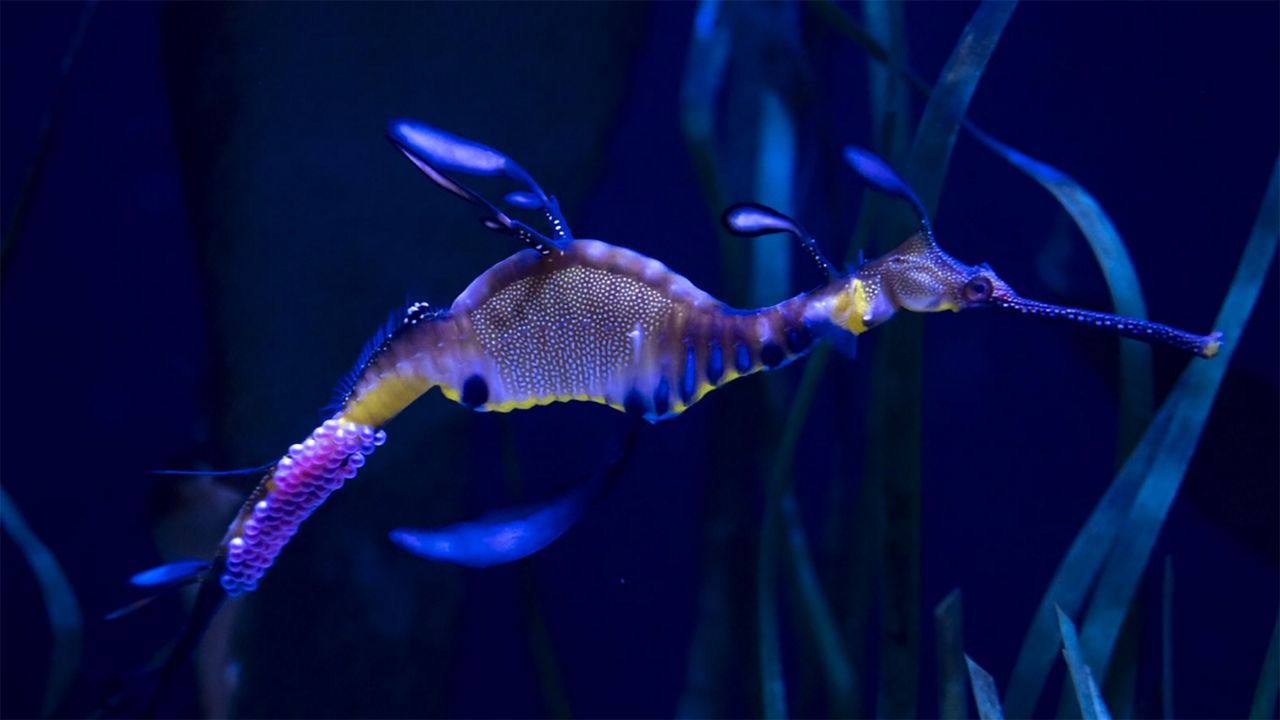COLUMBUS, Ohio — The Columbus Zoo & Aquarium announced the successful hatching of 26 weedy seadragons, also called "weedies."
This is a first for the zoo, which is now among just a handful of other North American zoos and aquariums that have them.
Seadragons, which are a marine fish related to seahorses, reach only about 18 inches in length, according to the zoo. They're also vulnerable due to the warming of bodies of water and destructive fish practices.
The process of hatching eggs is a delicate one for seadragons, the zoo said. The male fertilizes the eggs and carries them on their tales until they are ready to hatch. The transfer from a female to the male's tail is a delicate one, and the zoo said the fact it occurred once was a cause for celebration.

The zoo said the weedies were welcomed into the world between June 24 and July 4.
“Seadragon babies are incredibly fragile, delicate animals, and I’m so excited they are thriving in their new home and in our expert team’s care,” said Columbus Zoo and Aquarium President and CEO Tom Schmid in a release. “We hoped they would breed, but the fact that it successfully happened this quickly is amazing and a real testament to the team’s knowledge and dedication.”
The inch-long hatchlings will be raised for at least one year behind the scenes. The zoo care team reports the seadragons have a huge appetite, eating around 9,000 baby mysis shrimp and 18,000 copepods each week. The team also said it remains optimistic that the seadragons will survive. The zoo said only 5% of seadragons survive their first year in their native range.
"Weedies are relatives of seahorses and are a notoriously difficult species to breed," the zoo said in a release. "They have long, slender bodies and leaflike appendages that help them blend with seaweed. They grow to be 18-inches long and without teeth, rely on their tube-shaped snout to suck food in, like a straw. Native to the southern and eastern coasts of Australia, the ability to camouflage and blend with their environment helps them avoid detection by predators and scientists alike."
While guests can't see the new babies, they can visit the adult seadragons in the Nocturnal Building within the Zoo’s Australia and the Islands region.



